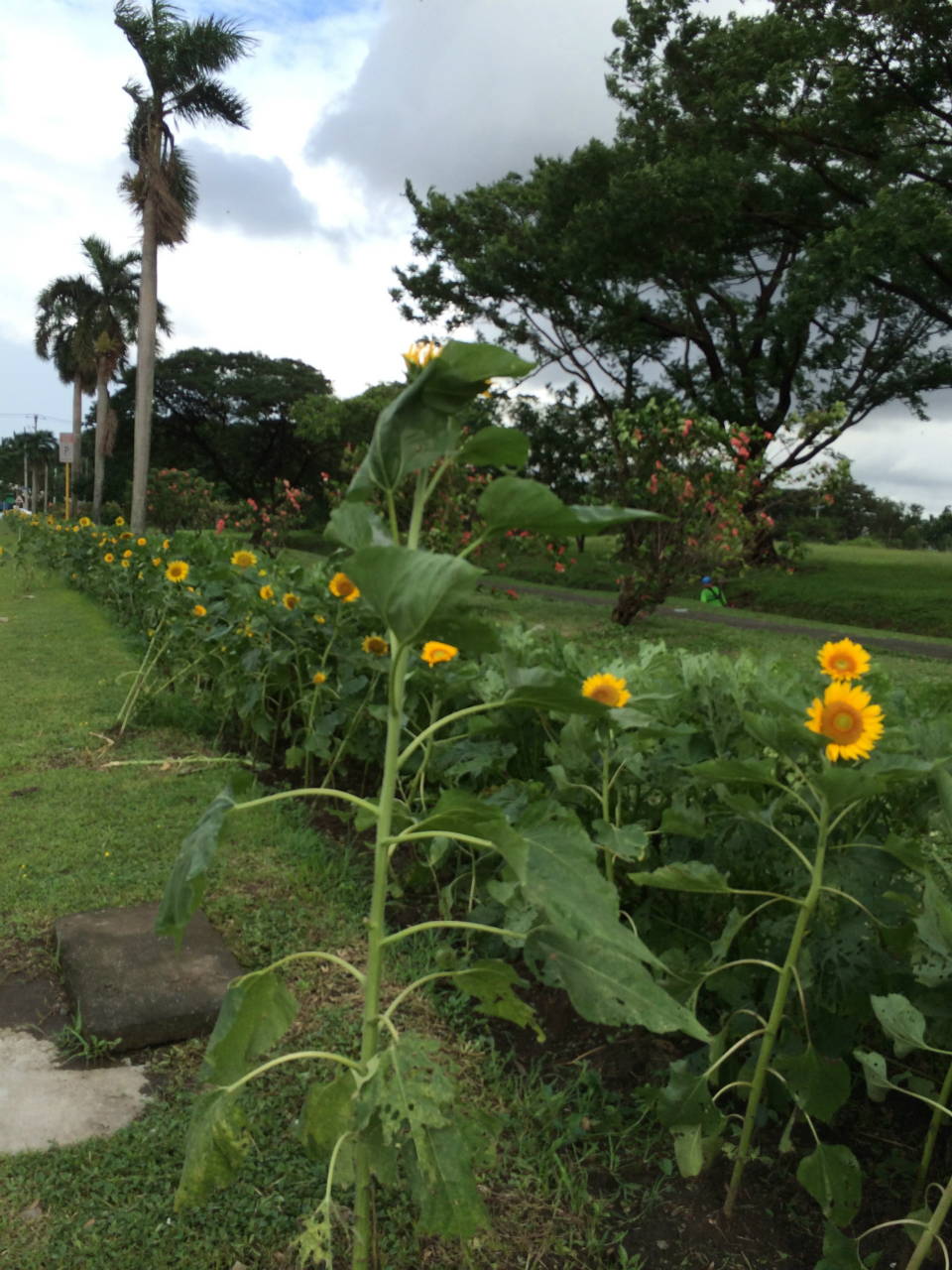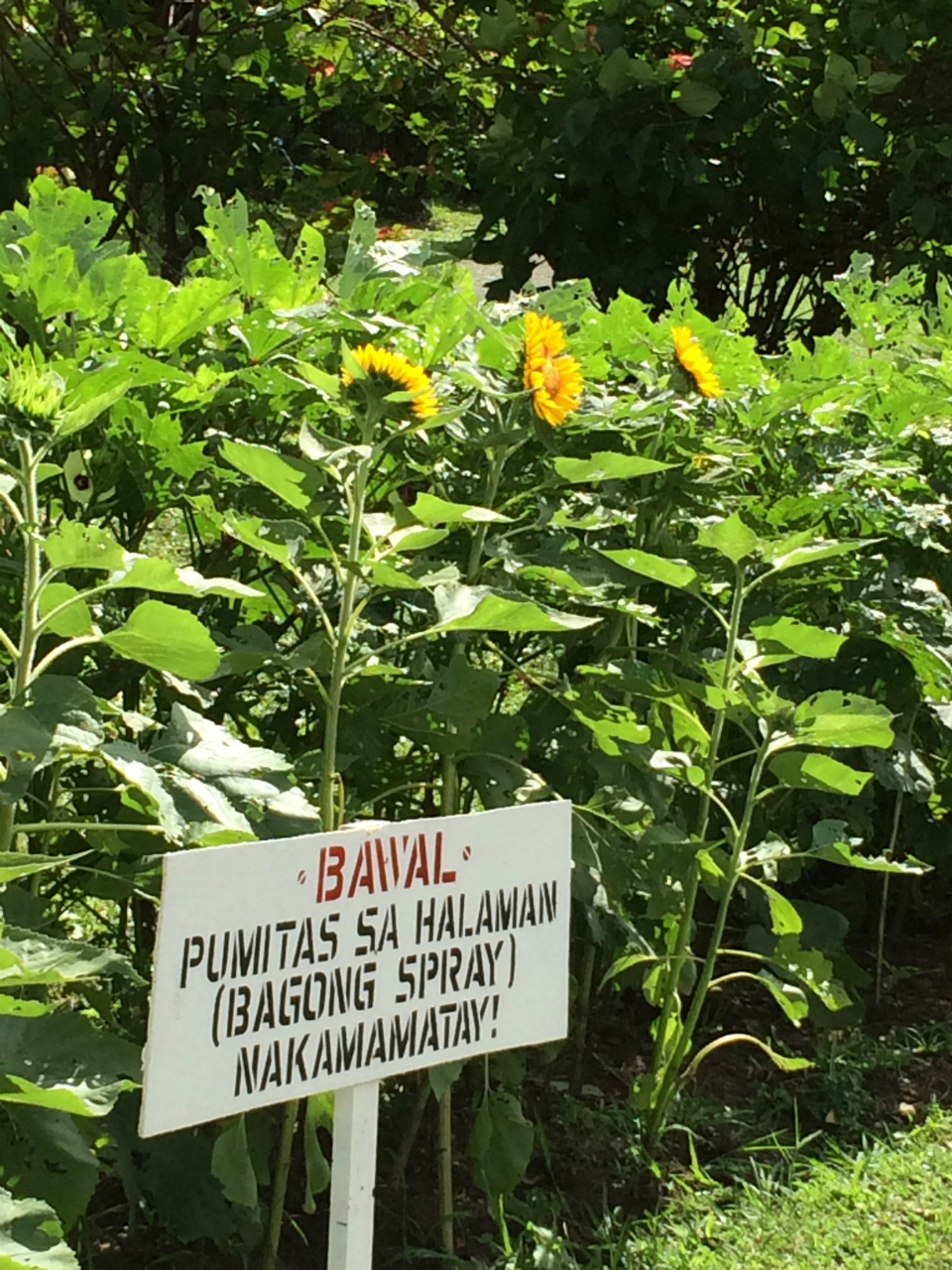Filtered By: Scitech
SciTech
Sense and Science: UP Diliman’s Monsoon Sunflowers
By DR. MICHAEL L. TAN
 The sunflowers are back at UP Diliman, and I thought it would be a good time as well to resume my blog on sense, sensibility and science.
The sunflowers are back at UP Diliman, and I thought it would be a good time as well to resume my blog on sense, sensibility and science. According to Emil Sotalbo, the retired former head of the Campus Maintenance Office (CMO), the sunflowers were first planted as a natural remedy against nematodes or worms that were attacking Dona Aurora flowers that lined the University Avenue.
Commencement tradition
The sunflowers rose high and, planted in large numbers, were so visually pleasing that it became a tradition to plant them every summer, in time for commencement exercises in April. It took meticulous planning to get the planting right, so that the flowers would bloom right before commencement. Too soon and they would wilt by Commencement Day.
A few days' delay and there would be no flowers at all.
There were also fears of summer rains. The experience was that rains would make the sunflower stalks too weak, making them droop—a sorry sight that wasn’t right for graduation day.
Calendar shift
Fast forward to 2014 when UP Diliman decided to join the other UP campuses in shifting the academic calendar to start in August, instead of June.
Anti-calendar shift people used the sunflowers in their protests: how dare the UP administration tamper with our traditions. There were dire predictions that commencement exercises in June 2015 would be without those sacred sunflowers because monsoon rains and winds would demolish the sunflowers.
Well, UP is a community of scientists and that includes the CMO, now headed by Engineer Alden Aynera. I asked him to look for alternatives and he did: a shorter variety of sunflowers, planted along a shorter stretch of University Avenue.
New seeds
The seeds were sown in mid-June, when the monsoon had already arrived. We nervously watched as the seeds germinated, and seedlings grew. The plants survived Glenda’s winds, because they were short. For good measure, the CMO people planted okra in between rows of sunflowers, the okra about the same height as the sunflowers, there to provide sturdy support for the weaker-stalked sunflowers when strong winds come in.
Two weeks ago, a few plants began to bloom. And last week, in time for a Freshmen Tour and the new school year, they bloomed in full force, resplendently yellow like the sun. Some of the flowers had a light center, while others had a dark, almost maroon—the color of UP—center.
It looks we’ll have sunflowers then, albeit shorter, for next year’s commencement exercises.
 Maintenance costs
Maintenance costs But I have to tell you I’m somewhat ambivalent about the sunflowers.
I love them, but I learned only recently that they’re quite high maintenance. For the last commencement exercise, we spent P43,000 on the sunflower seeds, and a large amount (you do not want to know) for labor.
I love them, but I learned only recently that they’re quite high maintenance. For the last commencement exercise, we spent P43,000 on the sunflower seeds, and a large amount (you do not want to know) for labor.
We even spent on insecticides because the flowers are very vulnerable to attacks from all kinds of predators. I shuddered when I saw the voucher entry for insecticides, being an organic agriculture advocate.
I should mention too that the CMO was worried about human predators, the ones who pick the sunflowers, so they put up signs around the sunflowers warning that the flowers had just been sprayed. Imitating the MMDA signs, the CMO said that the spraying made the flowers dangerous and potentially fatal: nakakamatay!
'Exotic' flowers
Many of the anti-academic calendar shift people were activists invoking nationalism—why should we follow the rest of the world and shift our calendar? And when they lamented the possible loss of sunflowers, they made it sound like we were losing a national flower.
But the sunflowers we plant in Diliman are exotic, meaning they were introduced into the Philippines. The taller varieties just aren’t adapted to local conditions, especially our strong rains and wind. Like the other UP icon, the acacia trees, a typhoon with strong winds can topple these exotic species, as Glenda did. Fortunately, there are shorter versions of sunflowers, which defied Glenda, even as several dozen towering acacia trees were uprooted.
All said, sunflowers and exotic species just aren’t easy to grow. But grow the sunflowers they did, with some scientific planning, and lots of okra and human nurturing.
I’ll still go for the sunflowers for next year’s graduation, for the sake of tradition, and science. The sunflowers offer us lessons about evolution and natural selection.
Evolution and natural selection
Being tall and big isn’t necessarily best: we see how short and small can be adaptive too.
Which is why the Philippines has so many “petite” versions of larger flora and fauna. The tamaraw is a smaller water buffalo and the mouse deer are, as the name implies, a smaller species of the deer. We might even have had a shorter human species, similar to those found in Flores, Indonesia. In a subtropical environment, being small is to be more fit, more adaptive, with better chances of survival.
Which is why the Philippines has so many “petite” versions of larger flora and fauna. The tamaraw is a smaller water buffalo and the mouse deer are, as the name implies, a smaller species of the deer. We might even have had a shorter human species, similar to those found in Flores, Indonesia. In a subtropical environment, being small is to be more fit, more adaptive, with better chances of survival.
I want to relate the sunflowers to sports. Every time I watch a UAAP basketball competition, I see how small our UP players are, averaging about 6 feet but still dwarfs when compared with the other universities’ towering players. But I think of evolution, and natural selection as our “tiny” players play. We’ll have our first win yet and prove we’re small, but terrible, like our sunflowers. — TJD, GMA News
Dr. Michael L. Tan is a medical anthropologist and a veterinarian, and current Chancellor of the University of the Philippines in Diliman, Quezon City. He also writes the opinion-editorial column "Pinoy Kasi" for the Philippine Daily Inquirer. He has been involved in numerous research projects on a range of issues from HIV/AIDS prevention to the culture of impunity. In 2012, he was elected to the National Academy of Science and Technology, the Philippines' highest science advisory body.
More Videos
Most Popular




